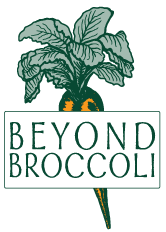Nutrition headlines are notoriously misleading, spinning the latest research to make it seem sexy, new, controversial, or otherwise exciting. One such headline struck me this week “Skip Breakfast Before Exercise to Burn More Fat.” Despite the fact that this report emerged from a recently published study this concept is far from new. This appears to be yet another take on the fat burning myth that has been popular among some personal trainers for over a decade.
The implication of this headline, and the persistent fat-burning myth, is that you can skip breakfast, do your usual workout (meaning you’ll burn the same number of calories) and more of what you burn will be fat. The reality is that without proper fueling you will not go as intensely (translate: as hard or as fast) therefore you will not burn the same amount of calories. So, more of the calories you burn may be fat calories but in the grand scheme of things if you want to lose weight you want to burn more calories (preferably without sacrificing muscle). For sports performance you probably want to go faster, harder or longer and to build (or at least maintain) muscle mass. Skipping breakfast prior to your usual workout is not likely to help you achieve any of these goals.
Now if you prefer slower exercise that happens to be more in the “fat burning zone” that’s great. Making exercise enjoyable is important for both short term weight loss and long term maintenance of good health. But you will need to exercise longer or more often (translate: longer duration overall) than you will with higher intensity exercise to lose weight or to gain other improvements related to sports performance. Again, not a problem but skipping breakfast is a bad idea if you want to increase the amount of time you exercise, even at a lower intensity. For one thing you’ll get hungry and what’s fun about exercising slowly with lots of time to think about how hungry you are?!
One caveat in the whole fast vs. fed before exercise is that you may not need a big breakfast – or a breakfast at all to sustain a decent workout. A small snack may be plenty, especially if you exercise for an hour or less. If your exercise of choice includes sprinting or doing laps on hills you may not be able to digest anything solid so some kind of beverage may be all you can tolerate before exercise. There is a lot of individual variation among athletes with respect to optimal fueling. The quality of your workout, as well as how you feel before, during and after your workout, will help you find the best fueling strategy.
If you are a casual exerciser just trying to drop a few pounds I recommend doing whatever makes you feel the best and keeps you motivated for your exercise routine. If you currently don’t eat before you hit the gym and you feel great, have plenty of energy and are meeting your weight loss goals, fine. If not eating makes you think about food the whole time, work out less intensely, for less time or less often you may want to add a snack or small breakfast to fuel your workout.


